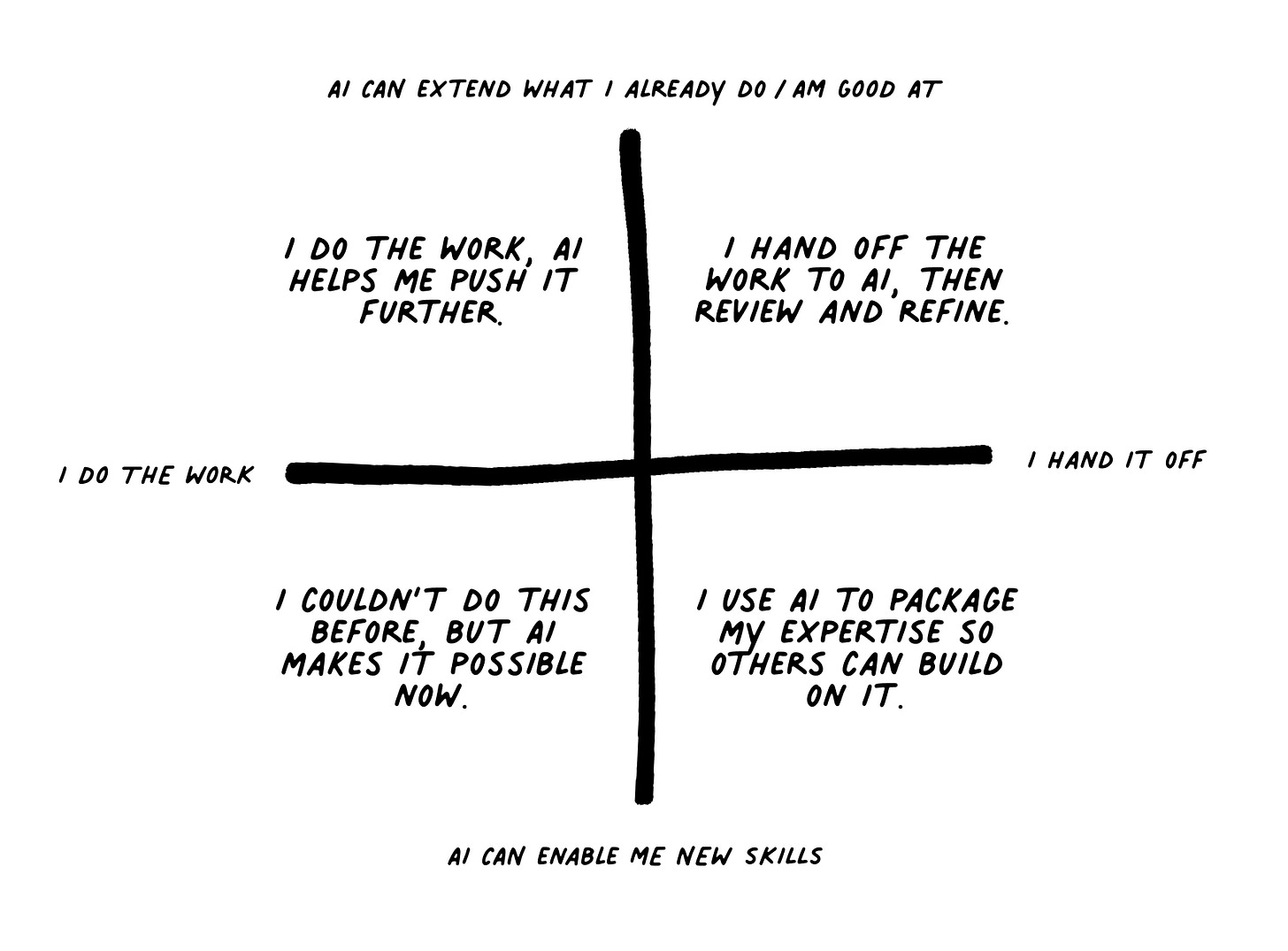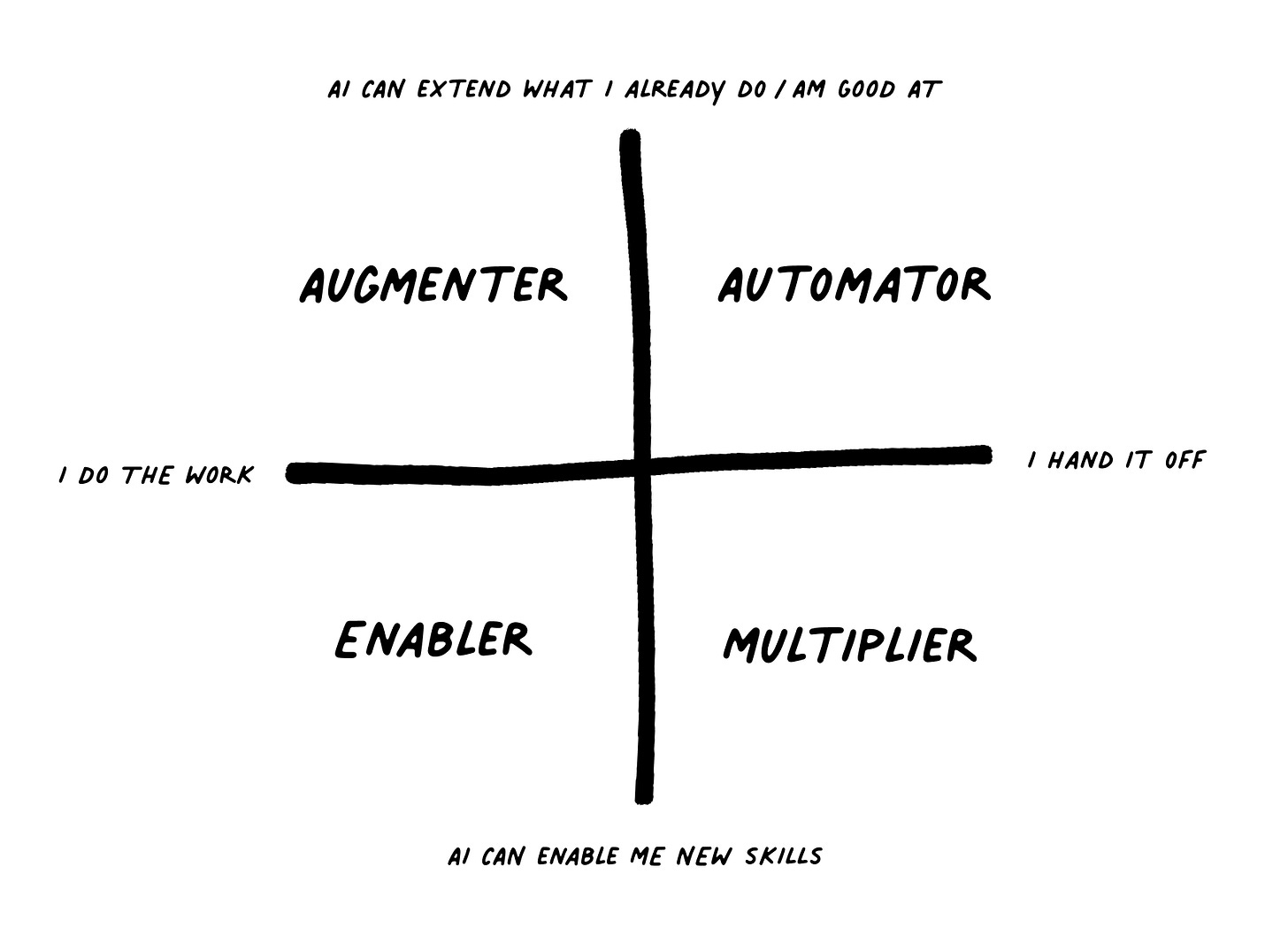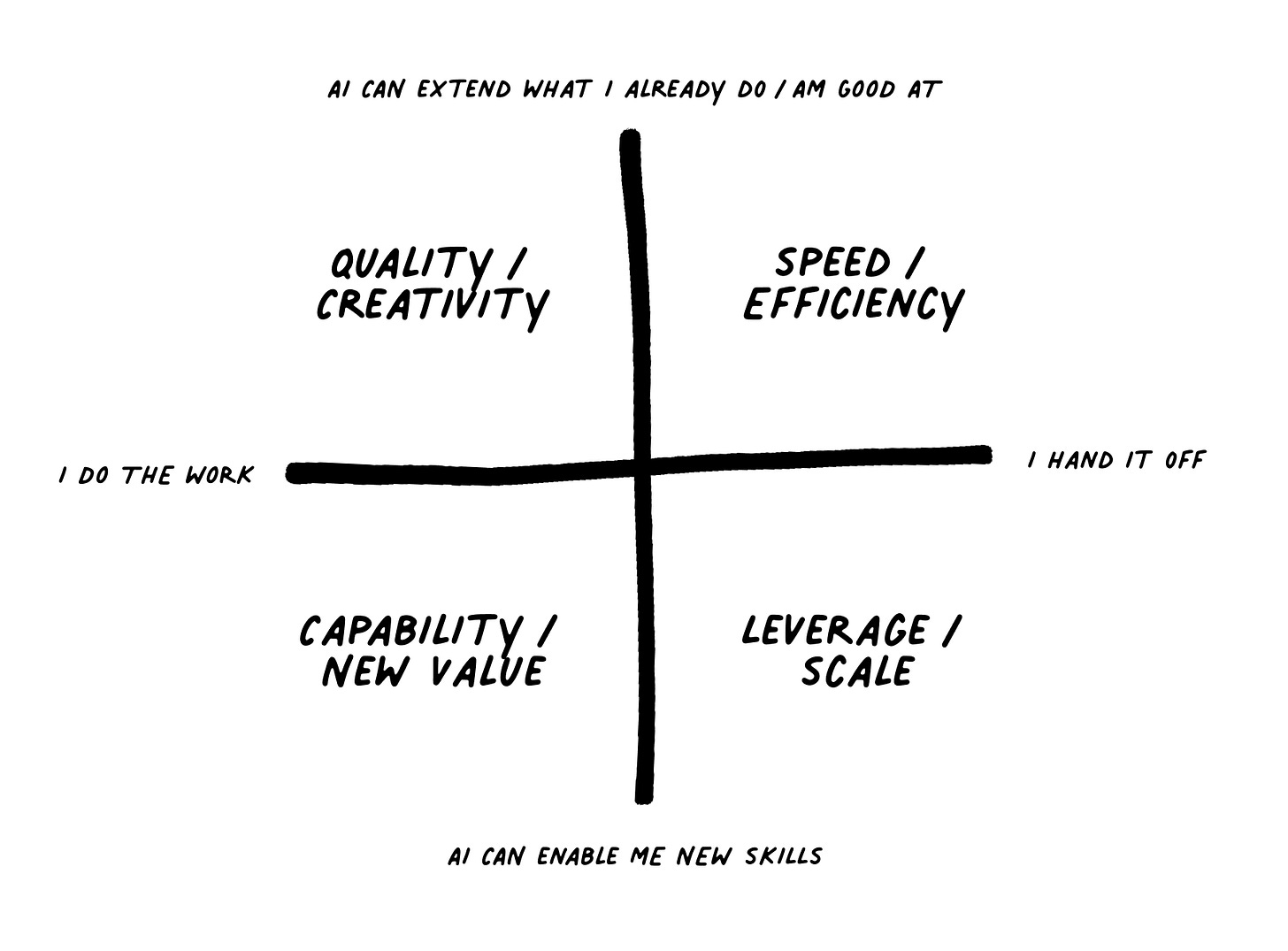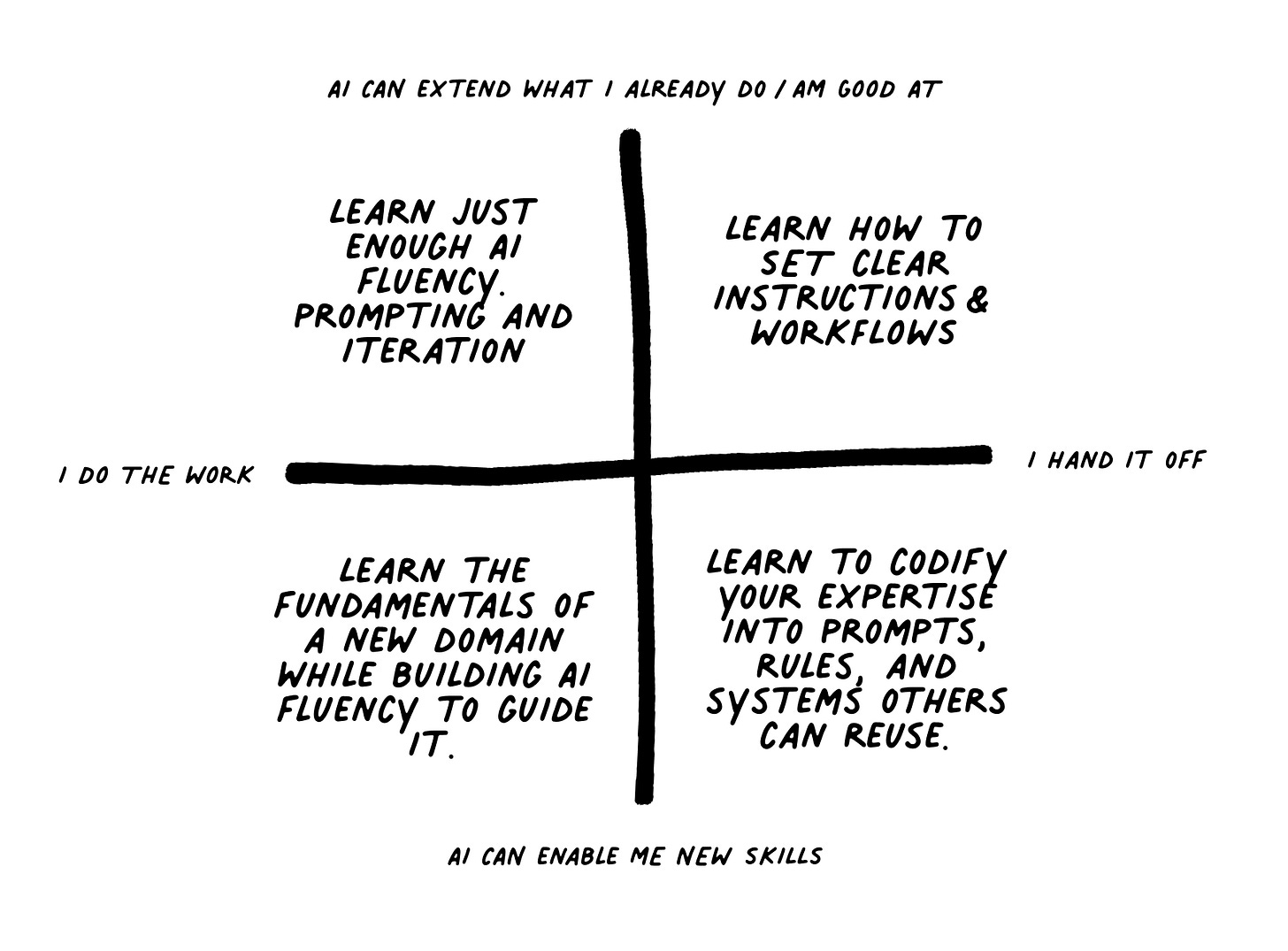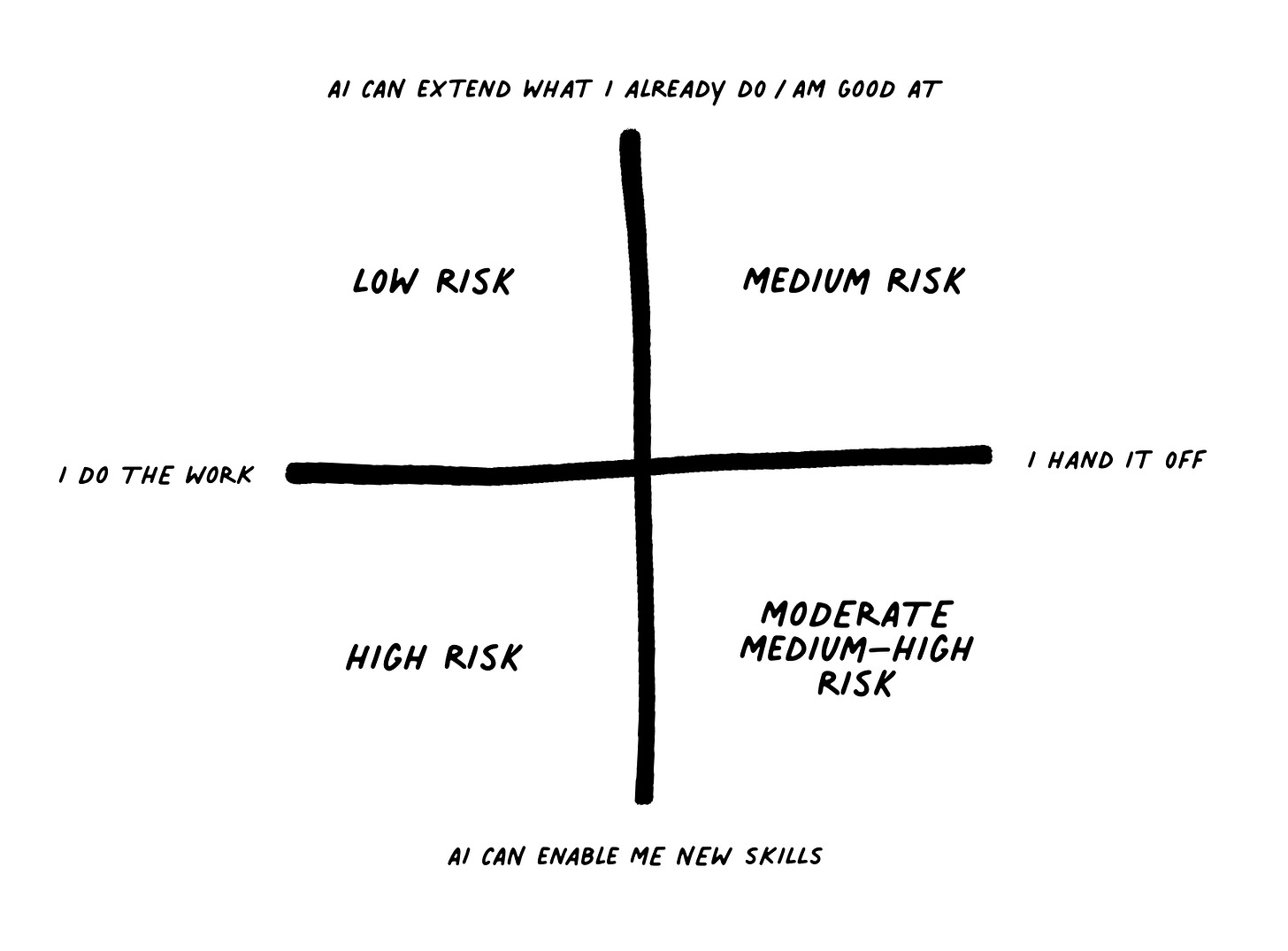Not every AI tool is worth your time
A simple framework for choosing tools that truly add value.
Have you felt FOMO about trying new AI tools, tricks, or prompts?
If not, that’s good.
When I talk with other designers, I’ve noticed a polarity: the excitement of experimenting with new things and the overwhelm of something new coming every single day (and honestly, I feel it too).
LLMs like ChatGPT are mainstream now. But vibe coding, MCP, RAG, and countless other AI tools are creeping into the conversation. Which raises the question: do these trends actually add value for designers, or are they just noise?
Designers usually start with problems before solutions. The same should apply here: don’t pick up tools (solutions) just because they exist, ask what problems they actually solve. Although sometimes exploring tools serendipitously can be fun and helpful. A tool can also reframe the problem in ways we hadn’t considered.
It’s about finding balance: not chasing every shiny thing, but not missing the ones that shift what’s possible (easier to said than done, I know!). Stepping back to ask about your intention before jumping in can be useful.
Start with clarifying the role of AI tools, then looks at your goals, your skills, the effort required, and the risk of errors. That way, when you jump in, it’s not out of FOMO but with purpose.
When you hear about a new AI tool that can do X, it helps to look beyond what it does on the surface. First, try asking two questions to explore it from different angles:
Is the AI tool extending what I already do well, or enabling me with entirely new skills?
With this AI tool, do I still do the work myself, or do I hand it off?
These two questions open up a simple 2x2 for thinking about…
What role should this AI tool play?
AI as Augmenter
“I do the work, and AI helps me push it further.”
You partner with AI to enrich the work you’re already good at.
But you’re still in the lead. You bounce ideas with AI, asking for design alternatives, generating visual variations, analyzing a screen, or surfacing corner cases you might miss.
AI helps you take it further and expand your craft and thinking.
AI as Automator
“I hand off the work to AI, then step in only to review and refine.”
Let AI take over the repetitive, mundane steps, like, generating responsive views, creating a style guide, writing handoff documentation (or anything else you’d rather not do manually).
By giving those tasks to AI, you free up time and energy for where you’re at your best
AI as Enabler
“I couldn’t do this before, but AI makes it possible now.”
One example on the rise is vibe coding. AI can help you build proofs of concept faster than ever, making them feel more real than prototypes from a design tool. Another common one: writing copy for screens.
AI as Multiplier
“I use AI to package my expertise so others can build on it.”
Everyone has access to AI, but not the same judgment.
A designer writing copy may get something decent from AI but struggle with tone and nuance. A PM can vibe code a prototype but struggle to align it with a style guide.
Experts can close that gap by creating systems that bring others closer to their level: reusable prompt libraries, playbooks connected to LLMs, or design systems and style guides tied into AI coding tools. Anything that helps others build with the same eye and taste you bring, while you still step in to review and refine when needed.
Next, you can continue using the 2x2 with different lenses like goals, skills, effort, and risk of errors.
Goals – What am I trying to achieve?
Another way to frame your relationship with AI is by clarifying the outcome you’re aiming for.
Augmenter: Quality / Creativity → Make better work
Automator: Speed / Efficiency → Ship faster
Enabler: Capability / New Value → Do new things
Multiplier: Leverage / Scale → Help others perform closer to your level
Skills – What do I need to learn?
When AI extends your skills, you still need AI literacy to use it well.
When AI enables new skills, it’s not just about the tool—you need the basics of coding, copywriting, or other domains to guide AI effectively and judge results. Without that foundation, it’s easy to miss mistakes or stall out.
Effort – How much effort should I invest in using this tool?
Not every tool requires the same level of commitment. Some are light lifts, and you can pick them up with a prompt or two. Others demand deeper investment: learning new fundamental skills, codifying your expertise, or building systems others can use.
Augmenter: Easy to pick up, since you’re already good at the craft and AI helps you stretch it further.
Automator: Speed / Efficiency → Minimal learning, just know how to instruct AI and review the result.
Enabler: Capability / New Value → Steeper climb, you need to learn about AI and the basics of a new craft.
Multiplier Leverage / Scale → Moderate effort, you don’t master a new craft but you do need to teach AI your way so others can use it.
Risk of Errors – What could go wrong if I trust this tool too much?
Augmenter: Low risk (you’re in control, but it’s important to stay critical and bring judgment).
Automator: Medium risk (blind spots can appear if you don’t keep a human in the loop to review).
Enabler: High risk (you may not know enough to catch mistakes if you skip learning the fundamentals or guidance from experts).
Multiplier: Medium-High risk (if you encode the wrong knowledge, others will replicate it).
Finally, once you try a tool, review the impact it has…
Augmenter
Did AI help me spot things I might have missed? Did it broaden my options or sharpen my judgment?
Automator
Did it really save me from repetitive work? Did the output stay consistent without needing heavy (manual) fixes?
Enabler
Am I gaining enough of the fundamentals to make sound judgments? Can I spot when AI is off, misleading, or producing shallow results?
Multiplier
Did it help others produce work closer to my standard? Am I spending less time correcting, answering the same questions or hand holding others?
So…
Hopefully that helps you choose and use AI tools with more intention.
AI is moving fast, and it’s tempting to keep running just to keep up. But speed without clarity only adds noise.
Until next time,
Thomas
Thanks for reading Design Buddy. Show your support by hitting the ❤️ or sharing this with a friend, colleague, or fellow designer. It helps spread the word and reach more people. Big thanks!


